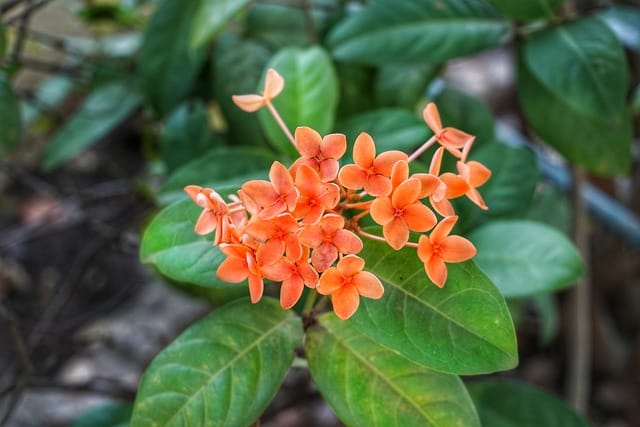How to grow Chinese Evergreens
Chinese Evergreens (Aglaonema) are popular indoor plants known for their vibrant foliage and ability to thrive in low light conditions

In this article:
- Introduction
- Overview of Chinese Evergreens
- Choosing the Right Chinese Evergreen
- Light Requirements
- Temperature and Humidity
- Watering and Soil
- Fertilizing
- Pruning and Trimming
- Propagation
- Common Pests and Diseases
- Tips for Troubleshooting
- Decorating with Chinese Evergreens
- Frequently Asked Questions
- Conclusion
Introduction
Chinese Evergreens (Aglaonema) are popular indoor plants known for their vibrant foliage and ability to thrive in low light conditions. They are native to the tropical regions of Asia and are cherished for their air-purifying qualities. In this article, we will guide you through the process of successfully growing and caring for Chinese Evergreens.
Overview of Chinese Evergreens
Chinese Evergreens are evergreen perennial plants with beautiful variegated leaves in shades of green, silver, and pink. They come in various cultivars with different leaf patterns and sizes, making them a versatile choice for indoor decoration.
Choosing the Right Chinese Evergreen
When selecting a Chinese Evergreen for your indoor space, consider factors such as leaf color, size, and light requirements. Look for healthy plants with no signs of disease or pest infestation. Consider your available space and select a cultivar that fits well with your interior aesthetics.
Light Requirements
Chinese Evergreens are adaptable plants that can tolerate low to medium light conditions. However, they thrive best in bright indirect light. Avoid placing them in direct sunlight, as it can scorch the leaves. Rotate the plant periodically to ensure even exposure to light.
Temperature and Humidity
Chinese Evergreens prefer average room temperatures ranging between 65-75°F (18-24°C). They are relatively tolerant of temperature fluctuations but should be kept away from drafts and cold air. A humidity level of 40-60% is ideal for these plants. Mist the leaves or use a humidifier to increase humidity if necessary.
Watering and Soil
Water Chinese Evergreens when the top inch of the soil feels dry to touch. Ensure that the pot has drainage holes to prevent waterlogging. Use well-draining potting soil with a mixture of peat moss, perlite, and sand to provide a balanced moisture level for the plant.
Fertilizing
Feed your Chinese Evergreen with a balanced houseplant fertilizer every 2-4 weeks during the growing season (spring and summer). Dilute the fertilizer to half the recommended strength to avoid overfertilization. Reduce feeding frequency during the dormant season (fall and winter).
Pruning and Trimming
Chinese Evergreens have a slow growth rate but may require occasional pruning to maintain their shape and remove dead or yellowing leaves. Use clean, sharp pruning shears to make clean cuts just above a leaf node. This will encourage new growth and keep the plant looking neat and healthy.
Propagation
You can propagate Chinese Evergreens through stem cuttings or division. Stem cuttings should be taken from mature stems and placed in water or a well-draining rooting medium until roots form. Division involves separating the plant into smaller sections, each with its own roots and stems. Both methods can be successful, and you can expand your collection or share the plants with others.
Common Pests and Diseases
Chinese Evergreens are relatively resistant to pests and diseases. However, they can occasionally be affected by spider mites, mealybugs, or scale insects. Regularly inspect your plants and take appropriate measures, such as spraying with insecticidal soap or using natural remedies, to control these pests. Avoid overwatering to prevent root rot.
Tips for Troubleshooting
If you notice yellow leaves, it may be a sign of overwatering or inadequate light. Adjust your watering schedule and relocate the plant to a brighter spot if necessary. Browning leaf tips can indicate low humidity or excess fertilizer. Increase humidity levels and reduce fertilizer concentration to address these issues.
Decorating with Chinese Evergreens
Chinese Evergreens are versatile indoor plants that can enhance the aesthetics of any room. They can be displayed in pots or hanging baskets and can be mixed with other houseplants to create beautiful arrangements. Their distinctive foliage adds a touch of elegance and freshness to any space.
Frequently Asked Questions
- Q: How often should I water my Chinese Evergreen?
- Q: Can Chinese Evergreens survive in low light conditions?
- Q: How can I increase humidity for my Chinese Evergreen?
- Q: Are Chinese Evergreens toxic to pets?
A: Water when the top inch of the soil feels dry to touch.
A: Yes, Chinese Evergreens can tolerate low light, but they thrive best in bright indirect light.
A: Mist the leaves or use a humidifier to increase humidity levels around the plant.
A: Yes, Chinese Evergreens contain compounds that can be toxic to cats and dogs if ingested. Keep them out of reach of pets.
Conclusion
Growing Chinese Evergreens indoors can be a rewarding experience, as these plants are relatively easy to care for and bring beauty to any space. By providing the right light, temperature, and humidity conditions, along with appropriate watering and regular maintenance, you can enjoy the lush and vibrant foliage of Chinese Evergreens for years to come.
